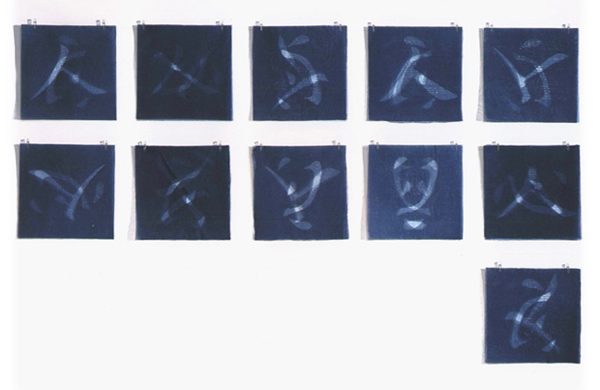

My name is Luciana Gianello, I live in Vicenza, Italy, I am married and have three daughters.
I approached textile art in 1978 when I saw a Renata Bonfanti's tapestry: it was a sort of illumination! I went to a first level weaving course in Padova, other stages in Milan and Tuscany, design stages in Friuli, at the same time making experiments and creating weaved tissues for clothes, belts, bags; every day my passion gratified me more and more.
Then I began an experimentation on the field of tapestry, but my teacher's influence was present in my work: I could not find a new and personal language yet.
In 1986 I gave my contribution to the creation of the Centro Creativo Exodus, born to re-introduce young people who had past experiences of drug and terrorism inside society and work.
There I held hand-weaving courses and as a member of the Centro Creativo Exodus I presented the project for a Textile Art Symposium, realized then with the title of “Textilia” in 1988 and 1991 by Vicenza's Town Council. As a member of the General Textilia Secretariat I organized some weaving stages and other stages like Shibori dyeing, Ikat, design, patchwork and also conferences about different textile themes with accomplished spokesmen, with students coming from all over Italy. In 1988 I became a member of CISST - Veneto (Italian Centre for the Study and the History of Tissues - Veneto Section).
Working in this field gratified and satisfied me: the interest pushed me to study and to deepen themes, together with different techniques and at the same time I attended various stages. Thus I tried water colour, collages, anthroposofic painting, carving, hand-made paper, the language of forms and colours. I was struck by a piece of tissue named “Sforbiciato” or “Taiado Taiuzado”, worked in a technique used in the XVIth century as witnessed by ancient documents, seen in palazzo Mocenigo in Venice; I tried to elaborate this technique which attracted me for his simplicity because I felt an inner need to “take away” instead of “add” matter and colour to my compositions.
Up to then I had used loom and threads in the same way the painter does with his palette, enriching my works of colours and various materials. I put the result of this new research in the realization of a chasuble (a religious dress), winning then the second prize at the first competition of my life. (Koiné, Vicenza 1990). The satisfaction was great and I understood that I had undertaken my way at last.
Afterwards I understood that the re-elaboration of a technique was not enough; it was important discovering how to realize it like transferring an image, a sensation, an idea into a concrete work.
If you have an idea but have not means to express it, the results are disappointing: it means to use only a technique and do not create anything personal. I started then to think about textile art like an instrument of knowledge and of inside change, which made me live in harmony with the world and with my life. I searched new hints for reflection in mythology, symbols, recurring enigmas, all related to the origin of Universal Culture.
Colours changed in my work: I felt the need to use white, as Kandinskji said: “White has the sound of a silence that we suddenly are able to comprehend”. I discovered light blue, “the deeper and less material colour, the means of truth, the transparence of compressed emptiness: in air, in water, in crystal or in diamond”.
After a long physical and psychic illness, I tried the suffering for an emptiness in my creativeness.
In these last years, the themes of identity and intercultural dialogue passionate me: “...To be where the other is.....”, this is what Emmanuel Levinas suggests me....



